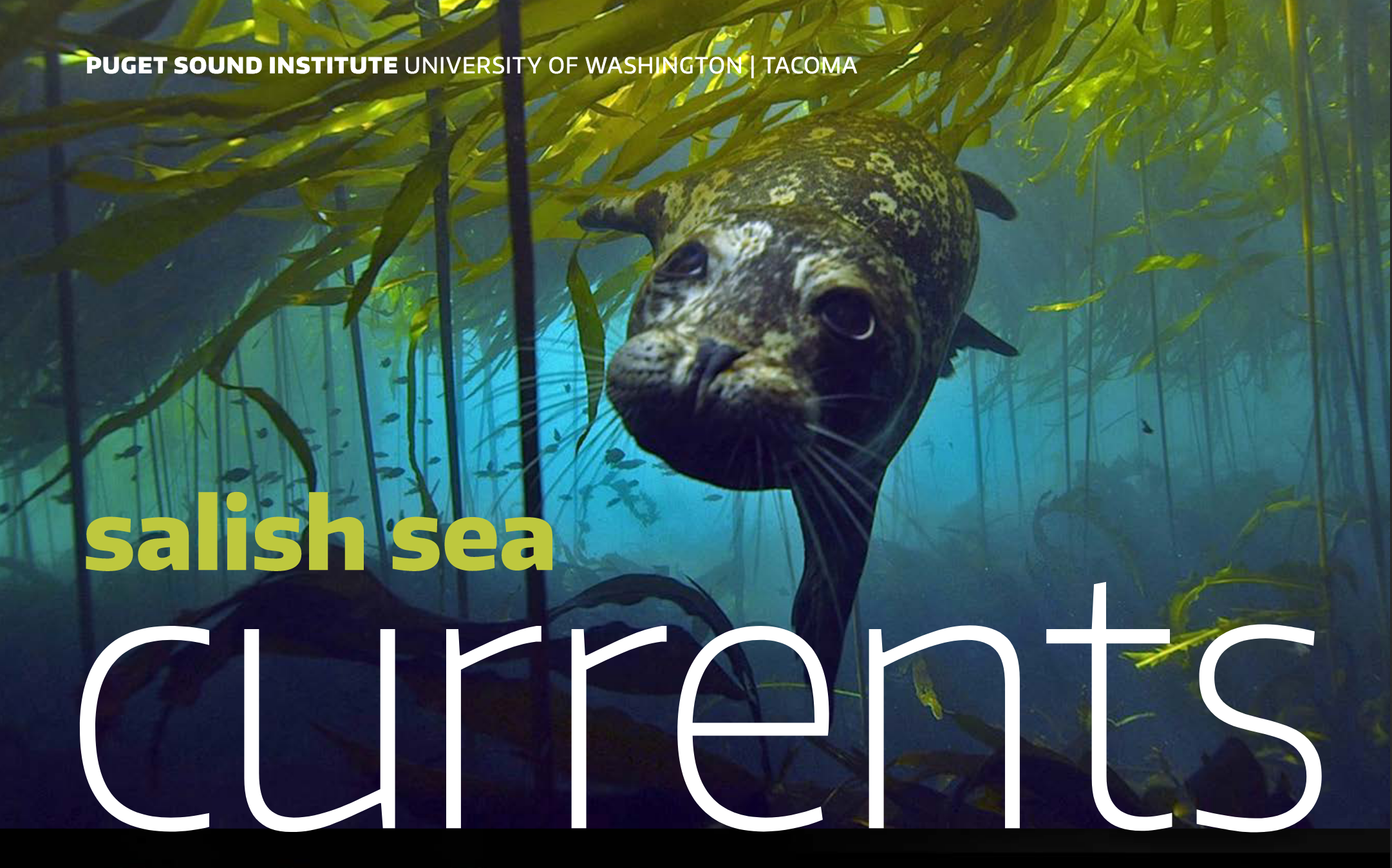Salish Sea Currents yearly report 2020
We have published a yearly round-up of stories from our magazine Salish Sea Currents. The 2020 edition focuses on the impact of climate change on the Salish Sea and includes a special section on the effect of global warming on infectious diseases in the ecosystem.

Introduction
Welcome to the 2020 edition of Salish Sea Currents magazine. This is the fourth issue of the magazine, and the first one dedicated to a single theme. All of the stories in this report address the impact of climate change on the Salish Sea ecosystem.
While this collection is not a report about climate change itself — we will not describe the underlying causes of global warming or even talk about how to reduce greenhouse gasses — it is a lens through which to view current ecosystem recovery efforts. Taken individually, these stories represent some of the most critical research being conducted in the Salish Sea. In that spirit, they cross a wide variety of topics, from shoreline armoring to endangered orcas. Taken together, they are further evidence, if any were needed, that climate change affects almost everything we do.
The issue begins with an interview with Cornell University and Friday Harbor Laboratories scientist Drew Harvell on the subject of warming oceans and the rise of viruses and other pathogens affecting wildlife. Fittingly, we spoke with Harvell in the early stages of the coronavirus outbreak as it began to sweep over the United States (more on that later). In the midst of the current pandemic, Harvell reminds us that the swift impacts of disease are not just a problem for humans. They are also a major threat to endangered species such as orcas and Chinook salmon. As Harvell explains, “warmer seas are sicker seas,” and climate change and disease are inextricably linked. We have dedicated the first part of this issue to that subject.
Other stories take the reader outside and into the field. We follow scientists to remote places like Protection Island, where long-term studies of rhinoceros auklets are providing clues about the general health of the Salish Sea. We journey by boat through one of the region’s last remaining tidal forests and look at how sea level rise could threaten hundreds of millions of dollars in habitat restoration projects. We report new discoveries about declining kelp beds and break important news about ocean acidification. In all, we offer 12 compelling stories, each influenced in some way by climate change and global CO2 emissions.
You will notice that this year’s issue is divided into four sections: Disease, saltwater habitat, terrestrial habitat (terra firma) and ocean acidification. This is meant to make the collection easier to navigate, but it also shows the breadth of the subject. It can be argued that almost any environmental story is now a climate story. Global warming is not just global, it is pan-specific and crosses all environments, whether they are oceans or shorelines or mountains.
Finally, we could not talk about this collection without acknowledging the current crisis presented by the coronavirus. Many of the stories in these pages were written before the onset of the pandemic, but the parallels between global climate change and the world-altering impact of COVID-19 are hard to miss. No one knows how this crisis will ultimately affect Salish Sea research and policy, but we have seen enough to understand that it, too, like climate change, will be part of our story for a long time. We now know the hard truth that global environmental problems are also problems here at home.
— Jeff Rice, Managing Editor

